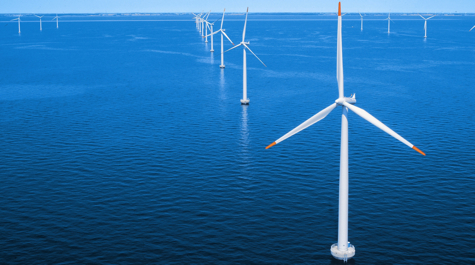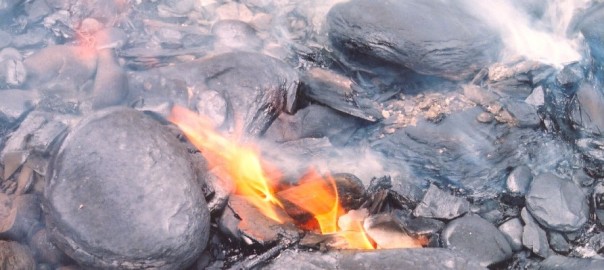By Per Hemmer, Bech-Bruun
The Danish offshore industry has grown continuously larger in the past couple of years. Offshore industry growth is in line with the focus and ambitions of the Danish energy policy. This article explores the possibilities for joining Danish offshore energy projects and the related legal framework.
- Offshore and near shore wind farms
In 2013, 24.6 % of the total Danish energy consumption was renewable energy.
In recent years the use of wind power has increased, as it is a political aim that renewable energy in the longer term is to replace fossil energy completely. The establishment of wind turbines and wind farms has been especially popular in Denmark.
There are currently 13 offshore wind farms in Denmark. The wind farms Anholt, Horns Rev I, Horns Rev II, Rødsand II and Nysted are large-scale wind farms.
As it is a political aim to increase the use of renewable energy, the Danish government has authorised the Danish Energy Agency to launch several offshore wind farm projects, including the large-scale wind farms Horns Rev III and Kriegers Flak.
International companies are finding Danish wind power an attractive investment. E.ON Vind Sweden AB has established the Rødsand II wind farm, and Vattenfall AB owns 60% of the Horns Rev I wind farm.
The Horns Rev III wind farm tender has just been concluded with Vattenfall AB as winner of the tender. The tender for the six near shore wind farms was published on 26 February 2015. The deadline for submission of applications is on 26 May 2015.
The contract notice for large-scale wind farm Kriegers Flak was published on 6 May 2015.
The application deadline regarding Kriegers Flak is 1 October 2015. The capacity of Kriegers Flak will be 600 MW, making it the largest wind farm in Denmark. Sweden and Germany have also chosen the Kriegers Flak area in the Baltic Sea as sites for wind farms.
If the cooperation between the countries is becoming a reality, Kriegers Flak will be the first international offshore grid in the world. Kriegers Flak is expected to be put into operation as of 31 December 2018.
The establishment of large-scale offshore wind farms and near shore wind farms can follow two different procedures: A governmental tendering procedure administrated by the Danish Energy Agency, or an open-door procedure.
In the government tender procedure the Danish Energy Agency announces a tender for an offshore or near shore wind farm project of a specific size within a specifically defined geographical area. A government tender is carried out to execute a political decision to establish a new offshore wind farm at the lowest possible cost.
In the open-door procedure, the project developer takes the initiative to establish an offshore or near shore wind farm of a chosen size in a specific area. The area and the size of the project are decided by the project developer. This is done by submitting an unsolicited application for a license to carry out preliminary investigations in the given area. The application must as a minimum include a description of the project, the anticipated scope of the preliminary investigations and the size and number of turbines.
The most important legal frame regarding wind power is the Danish Renewable Energy Act.[1] The provisions of the act apply to both offshore and near shore wind farms.
The act sets forward provisions regarding, inter alia, subsidies to wind farms, regulation of electricity production by wind farms established through tenders, and technical and safety standards of wind turbines. However, the Renewable Energy Act is supplemented by sections from several other Danish Acts.
The Renewable Energy Act stipulates that an applicant must obtain the following licenses in other to establish an offshore or near shore wind farm:
- Preliminary survey license
The permission allows preliminary surveys concerning the possible establishment of a wind farm. It is usually valid for one year. With respect to tenders, the preliminary surveys will be conducted by the government-controlled Energinet.dk.
- The applicant must often conduct an EIA (“Environmental Impact Assessment”). With respect to tenders, the EIA will be conducted by the governmental controlled Energinet.dk.
- Establishment license
The establishment license allows the establishment of the wind farm in question. The license can, and will most likely, include conditions set by the Danish Energy Agency which the applicant must comply with.
- Exploitation license
The license must be granted prior to the initialisation of the wind farm. Moreover, the applicant must document that the conditions contained in the establishment license are observed and complied with. If the capacity of the wind farm is more than 25 MW, an additional electricity production licence is required.
It follows from the tender documents from the latest tenders that the applicant must document sufficient financial capacity to establish the wind farm. Subsequently, the applicant must submit a statement of the applicant’s overall revenue for the last three financial years and equity ratio as a percentage of total assets for the last financial year as well as copies of the full annual reports (including notes and appendices) and audited accounts for each of the previous three financial years.
If more than one economic operator submits an application for pre-qualification (e.g. a consortium, a joint venture), all the joining parties must submit their own documentation and information.
Citizens aged 18 or more, living within a 4.5 km radius from a site where a wind turbine is about to be established, or who are living in a municipality where a wind turbine is about to be established, are entitled to purchase shares in the wind turbine at cost price. At least 20% of the wind turbine project must be tendered to the local residents. If a house is located close to a wind turbine, the house owner may be compensated for the depreciation of his house.
A subsidy is paid to Danish-based wind power. The size of the subsidy with regard to tendered offshore wind farms may vary, as the size of the subsidy is calculated as the difference between the market price and the bidding price.
- Hydrocarbon exploration in the North Sea
There are 55 platforms and 19 operating hydrocarbon fields in the Danish part of the North Sea. Mærsk Oil and Gas A/S operates 15 fields, while DONG E&P A/S operates three fields and Hess Denmark ApS operates a single field. In 2013, a total of 10.2 million cubic meters was extracted from the 19 fields.
More than 2/3 of the licensees are international companies, for instance from France, the United Kingdom and Germany.
In 2013, 54.9% of total Danish energy consumption was hydrocarbon-based (36.8% oil and 18.1% natural gas).
The political aim for the Danish Minister for Climate, Energy and Building is to continue with the hydrocarbon extraction and production over the next 10 years.
The Danish subsoil belongs to the Danish state, and a license under the Danish Subsoil Act[2] is a prerequisite for the exploration and extraction of hydrocarbons in the Danish subsoil. A license can be obtained in two ways; either through a tender or through the open door procedure.
The seventh licensing round regarding hydrocarbon exploration in the North Sea is in progress. 25 different oil and gas companies have applied for licenses in the North Sea. This is a record-high number. Licenses are expected to be issued at the beginning of 2015.
The Danish Energy Agency has announced that licensing rounds will be held annually in the coming years. Consequently, the Danish Energy Agency expects to invite to the eighth licensing round during the second half of 2015.
As licensing rounds will be held on an annual basis, the opportunity to apply for licenses has improved. Oil and gas companies now know approximately when it is possible to do so.
A license is obtained by application to the Danish Energy Agency. In order to be awarded a license, applicants must document that they have the required expertise and financial resources.
The quality and scope of the proposed work programme and the attendant documentation demonstrating the applicant’s willingness and ability to thoroughly explore for hydrocarbons in the area comprised by the application, is also a selection criterion. The applicant must describe what he considers to be a complete work programme for the area, and on this basis he must expressly indicate whether he is offering to perform the complete work programme, or which parts of it he intends to carry out.
The licensees’ liability for damages under the Subsoil Act must be covered by insurance. The insurance must provide reasonable coverage, in light of the risks involved in the operation of the business and the premiums to be paid. If the licensee is a subsidiary, the ultimate parent company of the licensee must assume an unconditional and irrevocable parent company guarantee as a surety with primary liability without any limitation in time, for the due satisfaction of all existing and future obligations and liabilities incurred by the licensee under activities carried out under the license. The parent company guarantee is covering obligations and liabilities incurred by the Danish state and Nordsøfonden. The Danish Energy Agency has published a standard parent company guarantee for the purpose.
Nordsøfonden, the Danish state’s oil and gas company, must be party to all new licenses in the Danish area of the North Sea with a 20% interest.
The licensees are not to pay any royalty or dividends to the Danish state besides taxes and duties. Taxes and duties are calculated as a 25% corporate income tax, which is deductible from the basis for assessing hydrocarbon tax, and a 52% hydrocarbon tax. In determining the basis for assessing hydrocarbon tax, a 5% hydrocarbon allowance is granted for investments over 6 years (a total of 30%).
It is a condition for obtaining a license that the concession parties enter into a joint operating agreement that sets up the legal frames for the parties’ operations when carrying out exploration of hydrocarbons. The Danish Energy Agency has created a standard joint operating agreement that the concession parties must use. The concession parties must also appoint an operator among them.
- Conclusions
The opportunity to invest in Danish-based energy projects is great. Wind farms are being established through tenders, and hydrocarbon licensing rounds regarding oil and gas are held annually.
The license and compliance regime in relation to the establishment of wind farms and in relation to hydrocarbons might be seen as extensive. Subsequently, it is recommended to seek advice before entering into wind power projects.
Bech-Bruun has vast experience in dealing with matters relating to wind farms and hydrocarbons. As an example, Bech-Bruun has been advising E.ON on their sale of 207 MW wind farm Rødsand 2 to Seas-NVE.
[1] Act No. 122 of 6 February 2015
[2] Act. No. 960 of 13 September 2011


